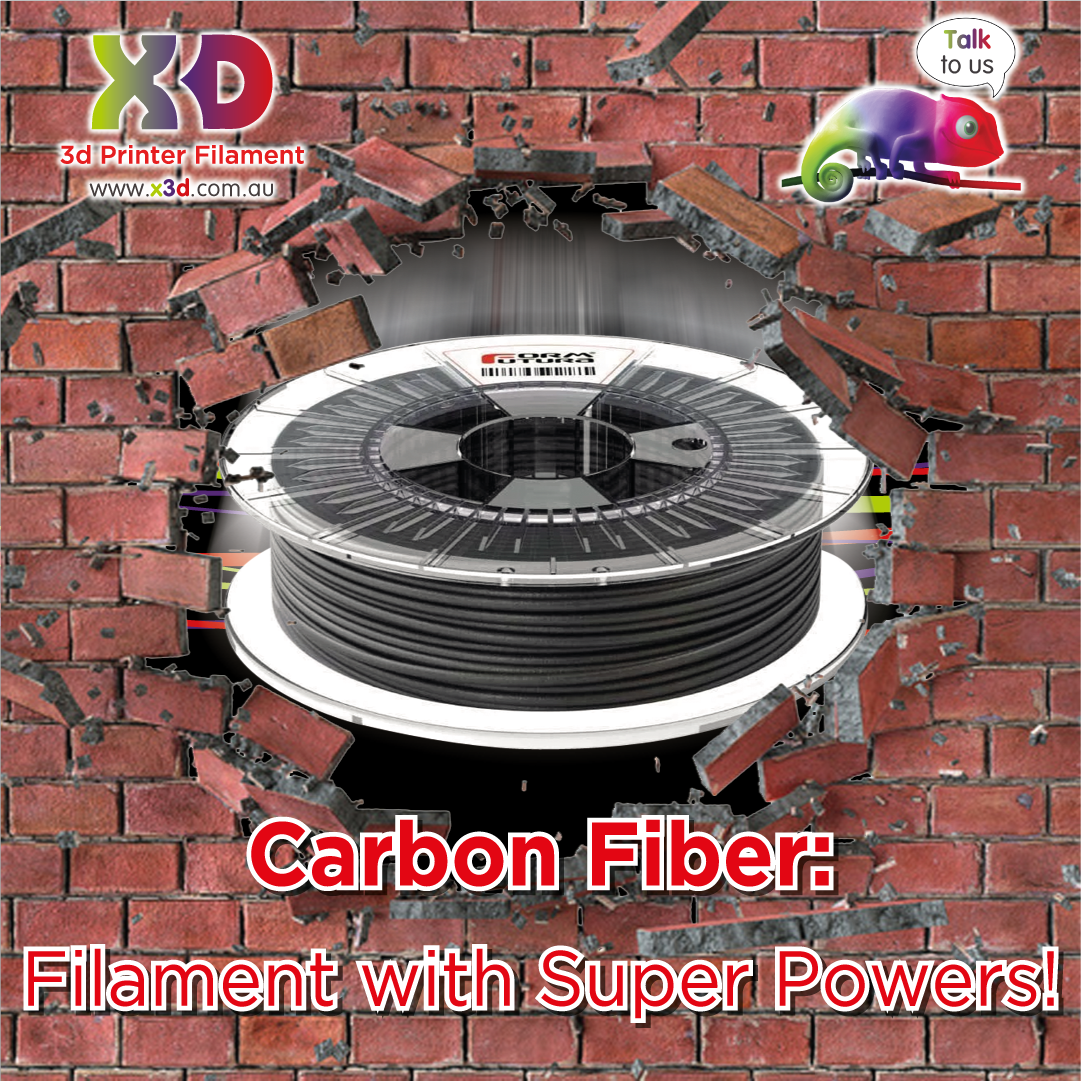Did you know that there is a way to amp up the power of your favorite 3D printer filaments such as ABS, PLA, PETG, and nylon?
It’s simple! Just by infusing short carbon fiber strands into these filaments, it turns these common filaments into superhero versions of themselves. Carbon fiber makes the filament stronger, stiffer, lighter, and more dimensionally stable. However, the downside to all this exceptional bump in mechanical properties is that nozzles are put under more stress than usual due to carbon fiber’s abrasiveness.
Read on to get in-depth information about Carbon Fiber filament.
What is Carbon Fiber filament?
Features:
- It has increased strength and stiffness: Carbon fiber filaments are strengthened by short carbon fiber strands infused into the base material, such as ABS, PLA, Nylon, and PETG.
- Lightweight: Carbon fiber is a lightweight material that translates to lighter 3D prints.
- Excellent dimensional stability: Carbon fiber filaments have fibers that prevent shrinkage during the cooling phase of the 3D printed part.
- Similar print setting as the base material: Carbon fiber filaments do not change the print settings of the base material that they are infused with.
Disadvantages:
- Damaging to nozzles: Carbon fiber filaments are abrasive against nozzles. Therefore, a hardened steel nozzle is required to print with it. They are also more likely to clog nozzles, so you need to give your nozzle a cleanup with every use when printing with carbon fiber filaments.
- Makes the filament more brittle: Despite the mechanical strength and stiffness that carbon filament delivers, it can make the filament more brittle.
- Oozing during printing: With filaments like carbon fiber, there is a high tendency for oozing during printing.
Tips for Printing with Carbon Fiber Filaments
Recommended print settings:
- Extruder: 210-265 °C
- Heat Bed: Up to 70 °C
Printing Hacks
- Lower print speed: Carbon fiber filament thrives with low print speeds as it puts less stress on the extruder and minimises the risk of clogs. Start by reducing the print speed to 25%.
- Print with a guided filament path: Using a gentle filament path with soft curves and turns can prevent this brittle carbon fiber filament from breaking off.
- Use a hardened steel nozzle: Carbon fiber filaments are brutal against nozzle, so it is a must to use a hardened steel nozzle when printing with them.
- Tweak retraction settings to stave off clogging: Carbon fiber also increases the risk of clogging. Reducing the retraction distance or even disabling the retractions can make a world of difference in the elimination of fiber buildup within the extruder.
- Get nozzles with larger diameters: Aside from getting a hardened steel nozzle, make sure that your nozzle has a larger diameter of 0.5mm or more to reduce clogging.
- Increase the first layer height further to prevent clogging: Increasing the first layer height will reduce back-pressure during printing, which lessens the build-up of fibers.
The Best Carbon Fiber Filaments on the Market
CarbonFil – 1.75 mm
FormFutura CarbonFil is a carbon fiber filament that uses a unique PETG blend of their popular HDglass compound. It is reinforced with 20% lighter and longer carbon fibers, which improve the stiffness and impact resistance.
ColorFabb XT-CF20
Using the Amphora 3D polymer as the base, the ColorFabb XT-CF20 displays exceptional stiffness and a matte finish in its 3D prints. It has low odour, high flex modulus, and high melt strength and viscosity.
X3D Pro Carbon Fiber Filament
The X3D Pro Carbon Fiber Filament is made of 70% PLA and 30% Carbon Fiber, making it incredibly strong and rigid, as well as display great layer adhesion and low warping.
Order Carbon Fiber filaments today for tough yet lightweight 3D prints!
Get strong yet lightweight filaments when you print with Carbon Fiber filaments. If you want to know more about Carbon Fiber filaments, you can email us at x3d@x3d.com.au.

